Australia So Much to See
Copyright (C) 2013 AustraliaSoMuchtoSee.com. All rights reserved


Sources used for identification of wildflowers shown on these pages and regions where they occur see Credits
These pages will
feature some of the wildflowers I have photographed in Western Australia, and where possible, identified. If you are able
to help identify further flowers, or correct any I may have wrong, please
contact us.
Information given for each species will
give botanical name, known common names, describe the flower, give time of year it flowered, and where it was photographed, and the
areas it occurs in. Names have been matched to Florabase which has also been used to show distribution.
See some of
these wildflower in larger sized photos on our Flickr pages.
Phebalium filifolium, Slender Phebalium
Small cream or pale yellow five petalled star flowers with five short and five long stamens
with prominent anthers at the tips, on a small shrub with round tubular rough textured foliage alternating along the stems
August
Hyden-Norseman
Road, Shire of Dundas, Goldfields, and Moorine Rock, Shire of Yilgarn in the eastern Wheatbelt region, Western Australia, and occursthrough the Wheatbelt, Goldfields and adjacent parts of the Great Southern region.
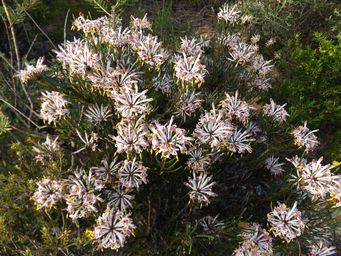
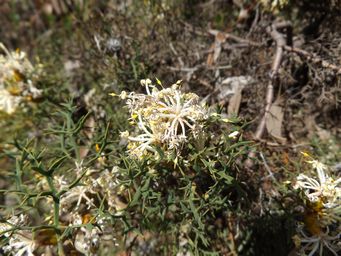
Petrophile linearis, Pixie mops, Pink Hakea
Complex pink and white mop sapped flowers with bright yellow stamens, on a small
bush with needle shaped leaves
Spring
Lancelin, coastal Wheatbelt region, and in the coastal strip from Geraldton to Augusta
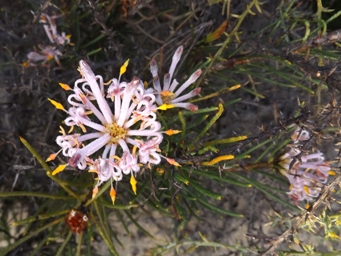
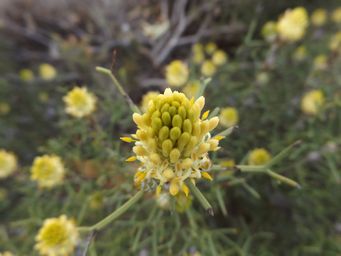
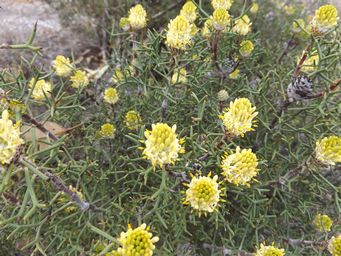

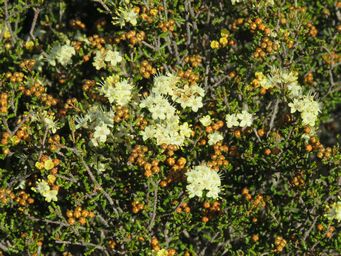
Phebalium tuberculosum
Small cream or pale yellow five petalled star flowers with five short and five long stamens with prominent
anthers at the tips, on a small shrub with succulent narrow foliage which has small--bobble like protrusions along the sides
August
Tarin
Rock Nature Reserve, Merredin, and Boorabbin, Wheatbelt Region, Western Australia, and occurs through the Mid West,
Wheatbelt, Great Southern and Goldfields regions
Petrophile seminuda, Bare Rock Conebush
Complex yellow flower mop shaped flowers on a shrub with prickly spiky leaves. Mop stage
above left, with opening flowers at right and above right.
Spring
Cordering and Gnowangerup, and found through the Mid West
and Wheatbelt from Geraldton to Perth and through the Great Southern and south coast to Esperance, with inland occurrences as far
as Kalgoorlie
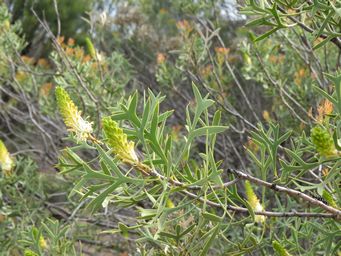


Petrophile shuttleworthiana, Candlestick Petrophile.
A bushy shrub up to two metres tall with long cream and yellow elongated flower
heads which form a long pointed cone following flowering. Foliage is stiff with flat divided leaves.
August
Seen near Caron Dam,
Shire of Perenjori, Mid West region, Western Australia, and grows around Kalbarri and in the southern parts of the Mid West, through
the northern Wheatbelt.
Petrophile squamata subsp. squamata, sometimes called Squamate Rock-lover.
Cluster of cream or yellow shiny flowers. Shrubs can grow
up to two metres high. Leaves are relatively fine, flat, and divided with each section being divided again into two or three
points.
September
Gnowangerup shire, Great Southern region, Western Australia. Found in parts of the South West and Great Southern
regions, and into the southern end of the Wheatbelt.

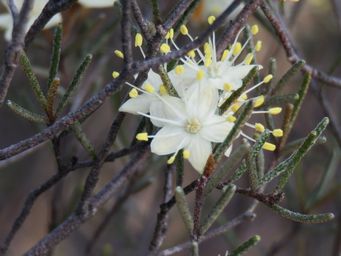
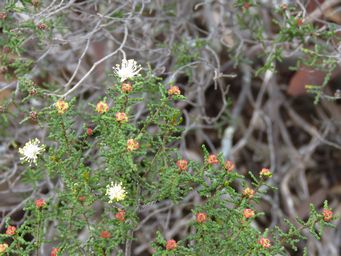
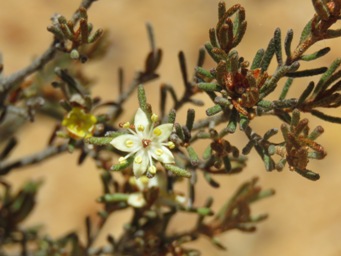
Phebalium multiflorum subsp. multiflorum 2023, (formerly Microcybe multiflora subsp. multiflora), Many-flowered Phebalium.
Tight clusters
of white, cream or yellow flowers at the tip of stems on a shrub up to one metre high. Flowers each have five petals and ten long
stamens. Foliage short and very bumpy.
August, just starting to flower
Westonia, Wheatbelt region, Western Australia and
found from Dalwallinu shire southwards through the inland Wheatbelt, the Great Southern, and the southern Goldfields regions.
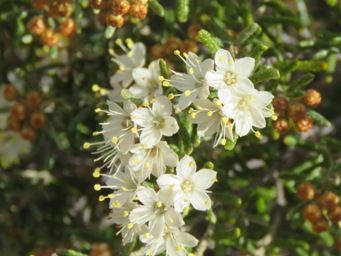
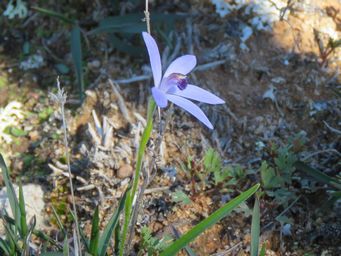
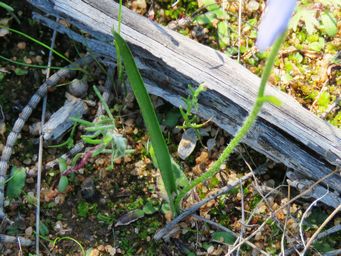
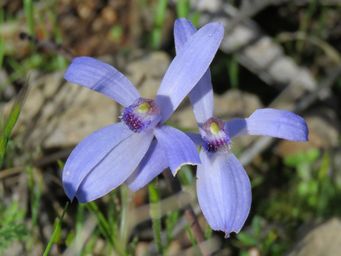
Pheladenia deformis 2004, Blue Beard, Blue fairy orchid (formerly Cyanicula deformis 2000, from Caladenia deformis)
A small purple
blue orchid, with lower two petals usually held close together. Labellum has long purple calli, giving rise to the common name
of Blue Beard. Labellum tip is maroon, as is the column cap. Column is green, with a point. Single leaf is long and curving
forward longitudinally, with some hairiness on rear. Stem is lightly hairy.
August
Totadgin Rock, Merredin, Wheatbelt region,
Western Australia. Found in the Mid West, Wheatbelt, South West, Great Southern, and southern Goldfields regions, favouring
winter wet and damp areas, such as the base of Granite outcrops.



















